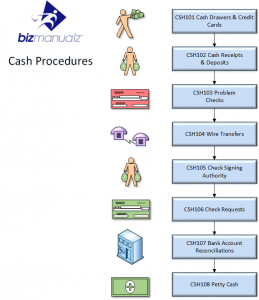Current Ratio vs Quick Ratio: What’s the Difference?

For example, if a company has $100,000 in current assets and $150,000 in current liabilities, then its current ratio is 0.6. However, if the current ratio of a company is below 1, it shows that it has more current liabilities than current assets (i.e., negative working capital). However, an examination of the composition of current assets reveals that the total cash and debtors of Company X account for merely one-third of the total current assets. This ratio was designed to assist decision-makers when determining a firm’s ability to pay its current liabilities from its current assets. The current ratio or working capital ratio is a ratio of current assets to current liabilities within a business. Small business owners should keep an eye on this ratio for their own company, and investors may find it useful to compare the current ratios of companies when considering which stocks to buy.
- Accounting ratios help you to decide on a particular position, investment period, or whether to avoid an investment altogether.
- At the 2022, the company reported $154.0 billion of current liabilities, almost $29 billion greater than current liabilities from the prior period.
- A low current ratio may indicate the company is not able to cover its current liabilities without having to sell its investments or delay payment on its own debts.
- It may be unfair to discount these resources, as a company may try to efficiently utilize its capital by tying money up in inventory to generate sales.
Our team of reviewers are established professionals with decades of experience in areas of personal finance and hold many advanced degrees and certifications. Over-trading companies are likely to face substantial difficulties in meeting their day-to-day obligations. Pete Rathburn is a copy editor and fact-checker with expertise in economics and personal finance and over twenty years of experience in the classroom. Charlene Rhinehart is a CPA , CFE, chair of an Illinois CPA Society committee, and has a degree in accounting and finance from DePaul University.
Non-current assets (long-term assets)
While the current ratio looks at the liquidity of the company overall, the days sales outstanding metric calculates liquidity specifically to how well a company collects outstanding accounts receivables. A ratio under 1.00 indicates that the company’s debts due in a year or less are greater than its assets—cash or other short-term assets expected to be converted to cash within a year or less. A current ratio of less than 1.00 may seem alarming, although different situations can negatively affect the current ratio in a solid company. For example, a company may have a very high current ratio, but its accounts receivable may be very aged, perhaps because its customers pay slowly, which may be hidden in the current ratio.
We are compensated in exchange for placement of sponsored products and, services, or by you clicking on certain links posted on our site. Therefore, this compensation may impact how, where and in what order products appear within listing categories, except where prohibited by law for our mortgage, home equity and other home lending products. Other factors, such as our own proprietary website rules and whether a product is offered in your area or at your self-selected credit score range can also impact how and where products appear on this site. While we strive to provide a wide range offers, Bankrate does not include information about every financial or credit product or service. The interpretation of the value of the current ratio (working capital ratio) is quite simple.
Interpreting the Current Ratio
You can find them on your company’s balance sheet, alongside all of your other liabilities. These typically have a maturity period of one year or less, are bought and sold on a public stock exchange, and can usually be sold within commission income three months on the market. The current ratio is most useful when measured over time, compared against a competitor, or compared against a benchmark. Most entrepreneurs take out small business loans to launch their startups.
The current ratio is a liquidity and efficiency ratio that measures a firm’s ability to pay off its short-term liabilities with its current assets. The current ratio is an important measure of liquidity because short-term liabilities are due within the next year. In the above formula, the current ratio is derived by dividing current assets by current liabilities. Caution
The composition of the current assets is also an important consideration. If the current assets are predominantly in cash, marketable securities, and collectible accounts receivable, that is likely to provide more liquidity than a huge amount of slow moving inventory.
What Does the Current Ratio Measure?
It measures a company’s ability to cover its short-term obligations (liabilities that are due within a year) with current assets. To assess this ability, the current ratio compares the current total assets of a company to its current total liabilities. The current ratio is calculated simply by dividing current assets by current liabilities. The resulting number is the number of times the company could pay its current obligations with its current assets. The current ratio, which is also called the working capital ratio, compares the assets a company can convert into cash within a year with the liabilities it must pay off within a year.
- A current ratio that is lower than the industry average may indicate a higher risk of distress or default.
- For example, consider prepaid assets that a company has already paid for.
- On the other hand, the current liabilities are those that must be paid within the current year.
- The current liabilities of Company A and Company B are also very different.
- It is one of a few liquidity ratios—including the quick ratio, or acid test, and the cash ratio—that measure a company’s capacity to use cash to meet its short-term needs.
Accounts receivable transactions are posted when you sell goods to customers on credit, and you need to monitor the receivable balance. This post is to be used for informational purposes only and does not constitute legal, business, or tax advice. Each person should consult his or her own attorney, business advisor, or tax advisor with respect to matters referenced in this post. Bench assumes no liability for actions taken in reliance upon the information contained herein. Enter your name and email in the form below and download the free template now! You can browse All Free Excel Templates to find more ways to help your financial analysis.
Current vs. cash ratio
On the other hand, a current ratio greater than one can also be a sign that the company has too much unsold inventory or cash on hand. Even from the point of view of creditors, a high current ratio is not necessarily a safeguard against non-payment of debts. By contrast, in the case of Company Y, 75% of the current assets are made up of these two liquid resources. The current ratio is one of the oldest ratios used in liquidity analysis. This is based on the simple reasoning that a higher current ratio means the company is more solvent and can meet its obligations more easily. QuickBooks Online allows business owners to manage the entire accounting process online, and you can manage your inventory, input your bank statement, and generate financial statements using the cloud.

